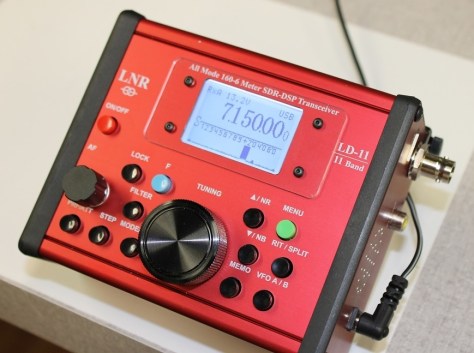
Since I own the Elecraft KX3, Elecraft K2 and the Elecraft KX1, I’m excited to see that Elecraft has announced a new addition to their product line: the Elecraft KX2. Elecraft will feature the KX2 at Four Days In May (FDIM) and the Dayton Hamvention.
I am attending vendor’s night at FDIM and the full Dayton Hamvention. I will post photos of the KX2 here–follow updates by bookmarking the tag KX2.
Full details from the Elecraft press release, via Southgate ARC, below:
(Source: Southgate ARC)
New KX2 radio to be announced this Thursday at the Dayton Hamvention 2016
Hello to all,
We are please to announce a new radio to complement the KX3 and the KX-Line. Here are the details.
What: Elecraft announces the KX2, Ultra-portable radio
When: Thursday, May 16th, 1300Z
Where: Four Days In May QRP event, part of the Dayton Hamfest activities
Elecraft is excited to announce a new radio targeting the Ultra-portable market with a Fit-In-Your-Pocket size. Please see the attached brochure for details.
Pricing
– KX2: $749.00
– Options and accessories: Please see the table below for pricing. Also see the FAQ for details.
Ordering/Availability
Distributors are encouraged to order both the KX2 and accessories now. The KX2 is already in production and early ordering will ensure your position for deliveries.
Note that the KX2 will be available in full, factory-built form only. There will be 2 internally-installed options available immediately. See the FAQ for more details.
Marketing Collateral Available
You will find a new section in the Elecraft Egnyte repository that contains:
– The attached brochure in editable form for you to translate and convert to local printing formats.
– A KX2 Date Sheet
– A KX2 Frequently Asked Questions (FAQ) in editable form
– Hi Resolution images for use with your marketing and web site content
Special Note on the new KX2 Battery and Charger system
– Elecraft will be stocking the KXBT2 (Li-ion Battery) and the KXBC2 (Li-ion Charger) for your to order.
– We have also arranged for you to purchase both items directly from our supplier, Tenergy (www.tenergy.com)
– Please see the attached document, KX2 Battery info v1.0, with the details.
Along with many of the Elecraft team, I’ll be in Dayton to launch the KX2 but will be able to answer questions as needed.
Again, we are excited to offer you increased business opportunities with the KX2 launch!
Cheers,
David



















 Bencher, Inc. of Antioch Illinois announced the sale today of the Bencher Amateur Radio product lines to Vibroplex, LLC of Knoxville, Tennessee. This sale ends Bencher’s presence in the amateur radio field, thus allowing the principals, Jere Benedict, President, and Bob Locher, (W9KNI) to move towards retirement.
Bencher, Inc. of Antioch Illinois announced the sale today of the Bencher Amateur Radio product lines to Vibroplex, LLC of Knoxville, Tennessee. This sale ends Bencher’s presence in the amateur radio field, thus allowing the principals, Jere Benedict, President, and Bob Locher, (W9KNI) to move towards retirement.








